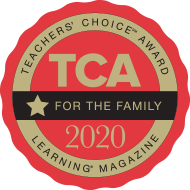Materials
- three whole citrus fruits (clementine, orange, grapefruit, lime, or lemon)
- magnifying glasses
- glasses with water
Key Science Concepts
- Many of the foods we eat come from plants.
- We eat certain leaves, roots, fruits, and seeds.
- Fruits have seeds.
Vocabulary
Encourage children to use words such as fruit, citrus fruit, sour, sweet, and seed, and science process words like observe, describe, contrast, and compare.
Directions
Show children the fruits and ask if they can name them. Have they tried any of these fruits before? Tell them that these are all called citrus fruits and that they will explore how citrus fruits are similar.
- Have children wash their hands.
- Ask children what they think they will see inside the fruit. How can you get to the insides? Use the word skin during this discussion.
- Help children peel the tangerine or orange; cut open the grapefruit, lemon, or lime.
- Have children talk about what the fruits look, feel, and smell like. Where are the seeds? What is the skin like? They may want to use the magnifying glasses.
- Distribute pieces of each fruit and have children taste them. If one of the fruits is a lemon or lime, give each child a slice and ask them to squeeze it into a small cup of water. Children can then taste the water—or they can bite into the lemon or lime wedge, if they wish.
Reflect and Share
Ask children how the citrus fruits are similar to each other. If you put an apple next to them, how would you know the apple wasn’t a citrus fruit? Discuss different ways people prepare and eat citrus fruits.

 Español
Español








